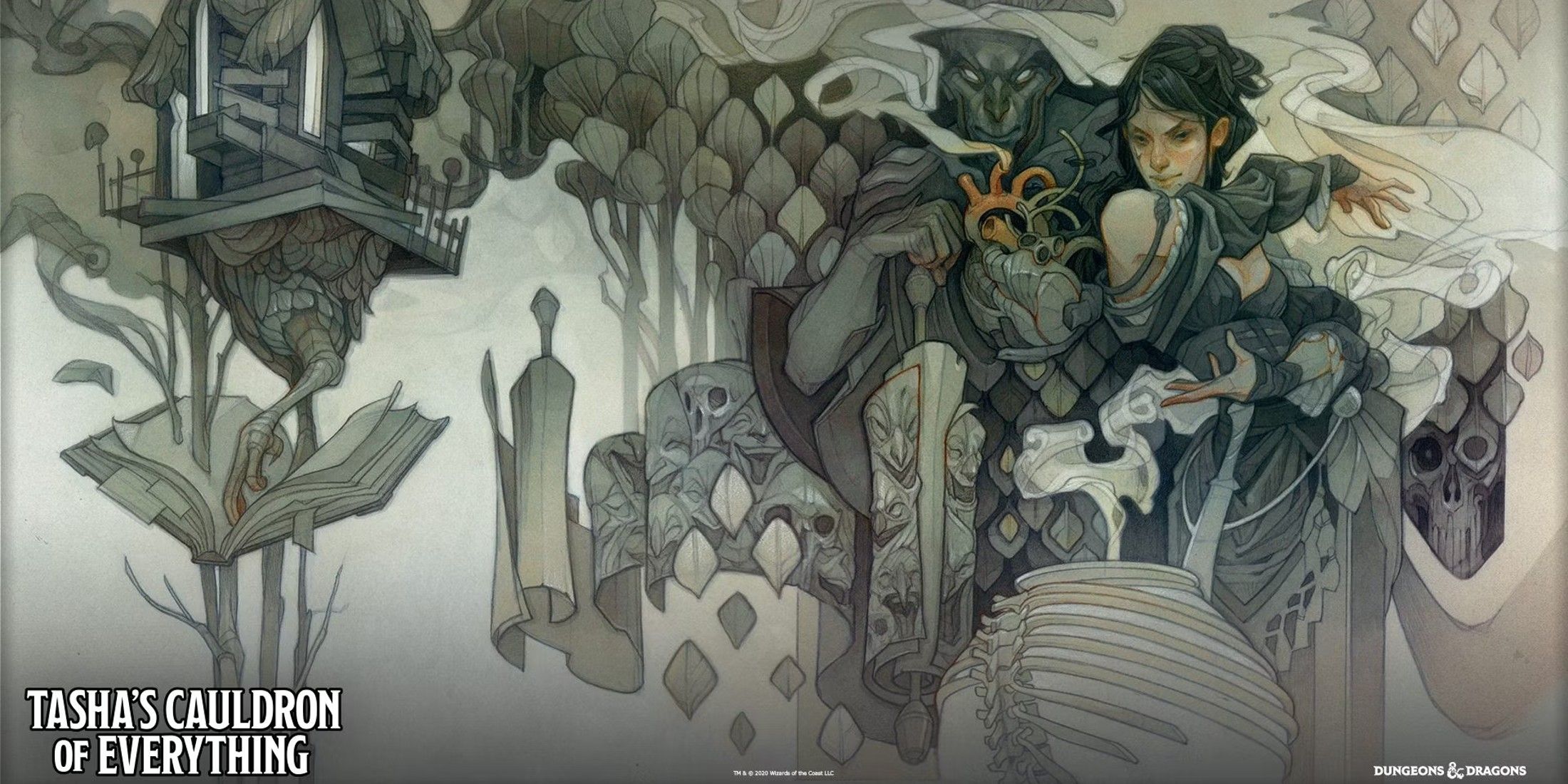Highlights
- Tasha’s Cauldron of Everything offers custom lineages for unique character builds in D&D, which could be implemented in Baldur’s Gate 4 for increased customization and personalization.
- Custom lineages allow players to choose creature type, stats, feats, and other traits, making builds more well-rounded and fitting their backstory.
- This customization can subvert cliches and allow players to create characters that break from traditional fantasy race tropes, making the game more interesting and immersive.
Baldur’s Gate 3 is beloved for its character customization, but it could go even further in its sequel, evidenced by the amount of mods dedicated to giving players more options. From cosmetics to new races, the roleplaying potential and depth of character in Baldur’s Gate 3 are preceded by its adored Dungeons and Dragons origins. Because of this, D&D’s sourcebook Tasha’s Cauldron of Everything has the perfect feature for Baldur’s Gate 4 to expand on—custom lineages.
In short, Tasha’s Cauldron’s custom lineages allow players to choose mechanics separately for a unique, comprehensive build rather than relying on the statistics provided by the base D&D race. The build impact could be groundbreaking in Baldur’s Gate, not only for the sheer customization of stats but also the idea of players being able to have complex backgrounds essentially built-in, making the game infinitely more personal.
Related
Dungeons and Dragons Reveals Tasha’s Cauldron of Everything
Dungeons and Dragons announces Tasha’s Cauldron of Everything and shares details and the release date for the upcoming optional sourcebook.
Tasha’s Cauldron of Everything Could Be the Sourcebook BG4 Needs
For the custom lineage, instead of a player choosing a race at first level, they can choose the following traits: creature type, size, speed, ability score increase (spread at their prerogative), one feat, a variable trait (darkvision or one skill proficiency), and one language other than Common. While not all of these are particularly relevant to the way Baldur’s Gate 3 is played, there are several pieces of this that encourage player imagination regarding their character’s distinct origins.
The Customization of Mechanics Creates Unique and Satisfying Builds
The open customization that custom lineages offer ensures that the character in play is unique, and traits like proficiencies and feats play into whatever backstory they have. In other words, at the core of many BG3 players’ games are choices that fit into whatever backstory they’ve come up with for their characters, and the custom lineage encourages that very personal connection.
While certain changes are announced with the upcoming update to D&D’s Player’s Handbook that will perhaps satisfy the same purpose (such as allowing players to have a starting feat), the custom lineage route is developmentally accessible. Rather than wading through statistics still based on race, trying to mix and match sensibly within the confines of what’s provided, this would prioritize individual in-game mechanics that come into play while setting up a story players are happy with.
Features Introduced in Tasha’s Cauldron are Already Beloved in D&D
There are two features that stand out from the custom lineage as being useful for Baldur’s Gate players due to their functionality. Firstly, a starting feat makes a build more well-rounded, as there are a lot of feats to choose from that both inform the backstory and provide powerful boons. First-level D&D can feel like a slog to begin with, but a starting feat could buff a character considerably. Not to mention that the level 12 cap in Baldur’s Gate 3 means players wanting to max out their main stat to 20 can generally only have one feat, which is a hard choice.
Secondly, the flexible split between ability scores is an overdue change. Many homebrew tables already allow this rule, and that speaks to how desirable this trait is. Fixed ability score increases through racial abilities can feel to players like they’re being shoehorned into one archetype without regard for interesting builds, especially in a game like Baldur’s Gate which is typically going to use those racial stats as a base. But if a typically intelligent D&D gnome wanted to become a barbarian, a very hit-now-think-later class, this Tasha’s Cauldron feature makes that possible without having to literally sacrifice strength for a compelling racial background. Additionally, custom stats like this also make up for races or subraces that players had hoped to see in BG3.

Related
How Dungeons and Dragons Tasha’s Cauldron of Everything Tries To Fix DnD’s Race Controversy
Dungeons and Dragons’ upcoming book, Tasha’s Cauldron of Everything, adds new system for customizing character lineage and starting bonuses.
Custom Lineages Can Subvert Stereotypes and Make the Game More Interesting
Seeing the custom lineage specifically in Baldur’s Gate 4 subverts the major downside that might show up in a D&D game, especially for those who lean into how the classic fantasy races present themselves. At the table, a character that looks like a halfling but acts like an orc might be confusing, especially for how they fit into the world. But if BG4 is anything like its predecessor, the story written for players will stop that awkwardness in its tracks, allowing players to witness the full breadth of their custom creation without in-world discord.
Simultaneously, the same issue of the classic fantasy races and their associated tropes is likely negated with the custom lineage on its own. To reject statistics based on race alone is to possibly reject cliches. As fun as it can be to see BG3‘s race-specific dialogues and skill checks, a custom lineage might present numerous options in this regard, letting the player take the lead on how they act rather than allowing themselves to be swept away by Faerunian stereotypes.
Overall, Tasha’s Cauldron of Everything provides players with the perfect opportunity to create characters strong in both mechanics and story from the jump. Features already popular at the tabletop are popular for good reason, buffing characters in ways that don’t feel like it’s over-optimizing. The obvious choice for the Baldur’s Gate 3 sequel is to allow this extensive customization, satisfying players with a more immersive story in the process.

